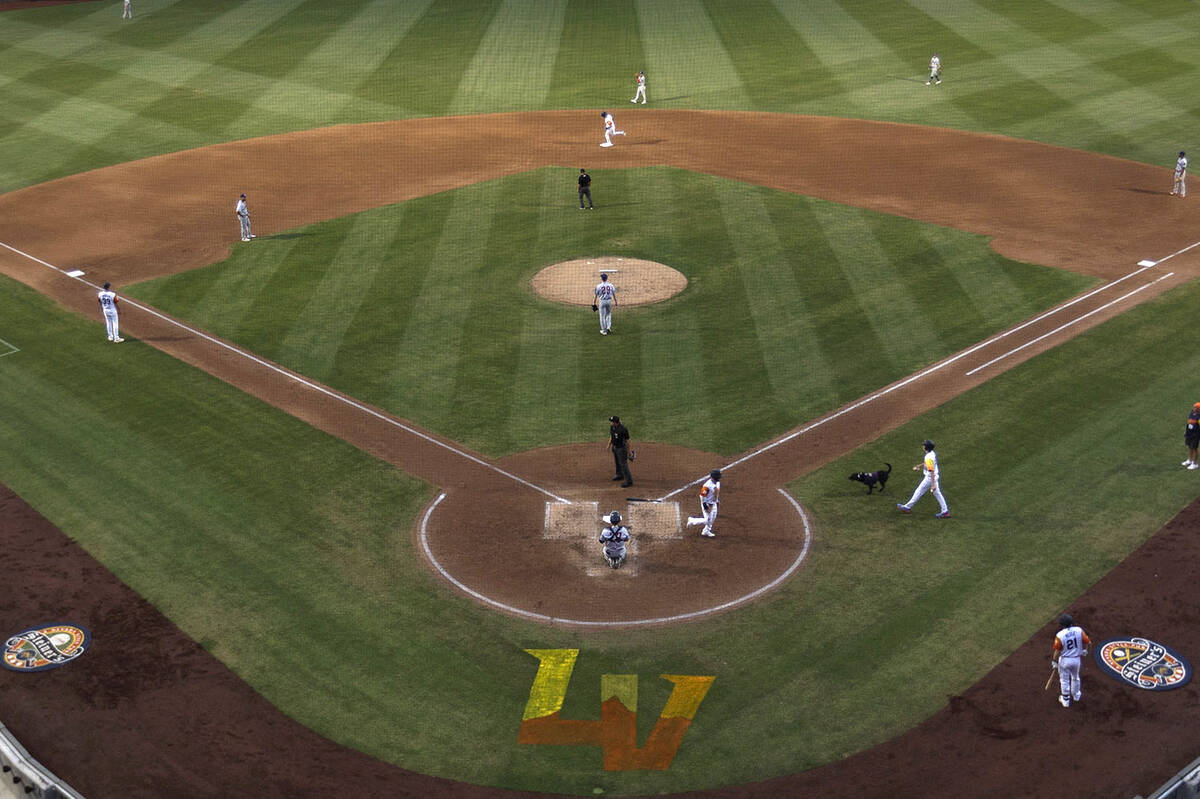Baseball aligns 2nd base with 1st and 3rd … after 135 years

As James Bond and fine jewelers are fond of saying, diamonds are forever.
But the axiom no longer applies to minor league baseball.
It was reported during spring training that second base would be repositioned during the second half of the minor league season to realign it — and also bring it closer — to second and third base. And that the size of the bases would expand from 15 inches in diameter to 18 as part of a Major League Baseball experiment to create more excitement in the game.
Red Smith, the renowned baseball writer, was of the belief that “90 feet between bases is perhaps as close as man has ever come to perfection.”
Now, it’s 87 feet. Like the great base stealers of a bygone era, perfection might be on the move.
The baseball wordsmith might have been stunned to learn that the distance between the bases first changed in 1887, when first and third base were moved into geometric corners of the diamond to aid umpires in determining fair balls.
That’s right. The last time the distance between all the bases was 90 feet was 135 years ago, when the St. Louis Browns defeated the Chicago White Stockings in the 1886 World Series.
Following the ancient alteration, any ball that struck first or third base was considered in play. It also trimmed the distance from first to second, and second to third, to 88 feet, 1.5 inches.
“I had no idea,” Aviators manager Fran Riordan said on the team’s media day about second not lining up with the other bases in more than a century. “After 130 years, I guess we’ve got to move it.”
PCL: First to act
The Pacific Coast League actually was first in quietly moving second base closer to the pitcher’s mound during the second half of the 2021 season, when the league also got the jump on switching to the bigger bases.
There was so little fanfare about moving second base that Riordan and other managers weren’t aware of it. But he said it was hard not to notice the new bases.
“They’re enormous. They look a pizza box,” Riordan said.
The Aviators’ Nate Mondou said the size of the new bases initially was eye-opening.
“They’re quite a big bigger, and I don’t know if it’s because they are so much wider, but they feel flatter,” the sometimes second baseman said about having to adjust his footwork around second base to compensate.
“Definitely when they first put them in, it took awhile to get used to. But by the end of the year, you didn’t notice.”
The hope is that the bigger bases will reduce collisions and injuries, and that repositioning second to align with first and third will promote more stealing, more first-to-third advancements, more singles being stretched into doubles and closer force-out and tag plays — all of which could make the game more exciting.
Recent statistics suggest it might even work.
Although the number of stolen base attempts remained much the same in 2021 — perhaps because many managers, as Riordan indicated, weren’t aware that second base had been moved closer to first and thus did not adjust their tendencies — the success rate increased from 74.8 percent to 77 during the second half of the season.
The upswing in stolen base percentage has continued this season. Seven of the 10 PCL teams, topped by Tacoma’s 84 percent (77 for 92), have bettered 2021’s first-half success rate, before the changes were implemented.
Men of steal
The Aviators last season swiped 41 bases in 51 tries. With more than half of the 2022 season remaining, they are 53 for 64 with the shorter base paths and bigger bases.
Stolen base attempts also are up across the league, from 1.74 per game last season to 2.43 through the first 56 games of this one — just as MLB had hoped before the minor league season began and rules experimentation continued.
“Repositioning second base is a subtle but impactful change designed to create more action in the game,” Morgan Sword, MLB’s executive vice president of baseball operations, told People magazine before opening day. “Moving the bases slightly closer together creates cleaner geometry in the infield and should increase the prevalence of stolen bases and infield hits.”
As Riordan suggested on media day, nothing ventured, nothing gained.
“Major League Baseball needs to retain fans; they need to garner new fans,” he said. “Every rule change they are trying to implement at either the minor league levels or independent levels are geared toward that.”
In addition to the bigger bases and shorter base paths, the minor leagues also have been playing with pitch clocks since 2015 and are experimenting with a “robot” home plate umpire — aka the Automatic Ball-Strike system — which debuted at Las Vegas Ballpark in late May.
“I can’t tell you the efficacy of any of them because I really haven’t noticed that much of a difference in the game with the rule changes,” Riordan said. “But if it gets more fans for baseball, I’m all for it.”
As MLB continues to toe the line between innovation and tradition, it was mentioned to Riordan that perhaps an asterisk would be needed in reassessing the impact of stolen base king’s Ricky Henderson’s impact on the game.
“They might as well just change the numbers and give him another 100 stolen bases,” Riordan said.
Contact Ron Kantowski at rkantowski@reviewjournal.com or 702-383-0352. Follow @ronkantowski on Twitter.